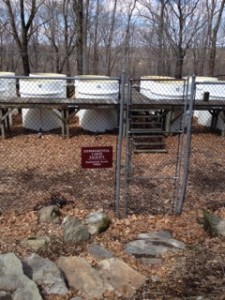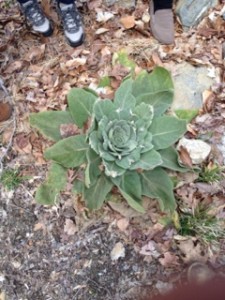On April 26, I took a trip to the Louis Calder Center at Fordham University. This biological field station was established in 1967 by Louis Calder, and is located 34 miles north of New York City near Armonk, NY. This is one of the only field stations in the Hudson Valley and located close to an urban area. I could even slightly see the city from a far off distance.
This facility conducts research in ecology, evolution, and conservation. It also provides students with hands-on experience in studying ecosystems through state-of-the-art laboratories, greenhouses, and experimental field environments. It allows for an opportunity to study the connections between human actions and the changing landscape, as well as engaging the broader community in scientific understanding of the environment. My experience here taught me a lot of new information about how researchers study ecosystems, and how they apply it to real world conditions, making it useful in many fields like agriculture and sustainable farming.
I was fortunate to hear a talk from researcher Michael Sekor, a former undergraduate at Vassar College and a current graduate student in the Department of Biological Sciences at Fordham University. His research involves the adaptive evolution of field mustard (Brassica rapa) in novel environments. Understanding the selective pressures and evolutionary responses to introduced species is crucial when making informed decisions on biodiversity management. He used Brassica rapa in this study because it’s a model organism that is able to rapidly adapt to climatic changes. To examine the evolution, Sekor planted Brassica rapa from southern California and planted them in the field in New York. Studying how the phenotypic traits change within the first two generations of being introduced to a dramatically different environment will hopefully shed light on the invasive mechanisms of weedy plants. Field mustard plants are able to grow in almost any climate, making them the perfect invasive species. This study can also be applied to agriculture because the Brassicaceae family includes cabbage, turnips, and rapeseed. Furthermore, farmers may learn more about dealing with invasive species and weedy plants. To learn more about Sekor’s research, click here.
Studying how plants interact is necessary for scientists, farmers, and the community. The Calder Center also has a resourceful lake that can be used for aquatic research. The botanical research and conservation work carried out at the Fordham University Calder Center is necessary to determine how climate change and human actions affect biodiversity and ecosystems. It also performs pollen counts and weather information which informs the population of NYC. In the future, this station could possibly succeed in helping farms get organically grown food into the city, and help inform farmers of how to grow in a way that is beneficial to the environment.
The mullein plant (Verbascum thapsus) found near the damn at the Calder Center. This plant is also known as the “toilet paper plant” because of its soft leaves.



